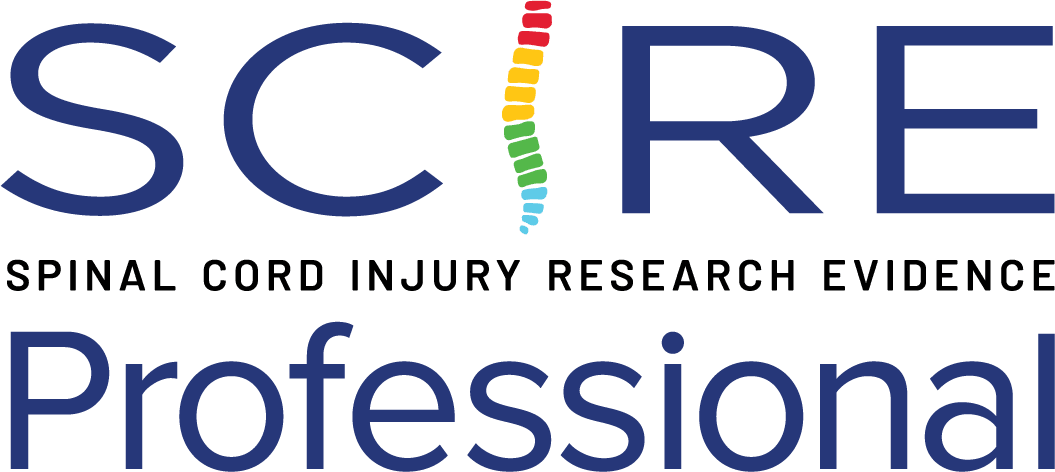- The Activities-Specific Balance (ABC) Scale rates perceived confidence in performing 16 different standing and walking activities
- It provides a subjective measure of balance confidence; so, scores are not based on clinician observation of performance and clinicians should also consider factors such as self-esteem and insight when using this scale
Clinical Considerations
Compared with the Falls Efficacy Scale, the ABC scale includes more challenging mobility tasks, such as negotiating escalators, which may make it better suited for ambulatory individuals (Shah et al. 2017).
ICF Domain
Activity ▶ Mobility
Administration
Self-report measure.
Length
Approximately 5-10 minutes.
Number of Items
It has 16 items/questions that require the patient to rate his/her confidence that he/she will not lose balance or become unsteady while performing the following activities:
- Walking around the house
- Walking up or down stairs
- Bending over to pick up a slipper from the front of a closet floor
- Reaching for a small can off a shelf at eye level
- Standing on tiptoes and reaching for something above his/her head
- Standing on a chair to reach for something
- Sweeping the floor
- Walking outside the house to a car parked in the driveway
- Getting into or out of a car
- Walking across a parking lot to the mall
- Walking up or down a ramp
- Walking in a crowded mall where people rapidly walk past
- Being bumped into people as they walk through the mall
- Stepping on to or off an escalator while holding onto a railing
- Stepping onto or off an escalator while holding onto parcels (so that they are not able to hold the railing)
- Walking outside on icy sidewalks
Equipment
N/A
Scoring
- The respondent rates his/her confidence in performing each activity without losing balance by selecting a value between 0% (no confidence) to 100% (completely confident).
- Overall score is calculated by adding item scores and then dividing by the total number of items.
Languages
English, French Canadian, Chinese, Dutch, German, Hindi, Korean, Portuguese, Swedish, and Turkish.
Training Required
No formal training required.
Availability
The print version of the scale may be freely reproduced for student training, research and clinical practices in which therapists and assistants use the scale to assess fewer than 1000 patients per year. Contact primary developer and copyright holder, Dr. Anita Myers at amyers@uwaterloo.ca
Measurement Property Summary
# of studies reporting psychometric properties: 2
Interpretability
(Shah et al. 2017; n=26; 20 males, 6 females; mean (SD) age: 59.7 (18.9) years; 5 AIS C and 21 AIS D; level of injury: C1-L4; chronic SCI)
- MDC: 14.87%
(Shah et al. 2017; n=26; 20 males, 6 females; mean (SD) age: 59.7 (18.9) years; 5 AIS C and 21 AIS D; level of injury: C1-L4; chronic SCI)
Reliability – High
- Test-retest reliability is High for ABC scale (ICC = 0.93, 95% CI = 0.85-0.97)
(Shah et al. 2017; n=26; 20 males, 6 females; mean (SD) age: 59.7 (18.9) years; 5 AIS C and 21 AIS D; level of injury: C1-L4; chronic SCI)
Validity – Low to High
- High correlation with MiniBESTest: r = 0.76
- Moderate to High correlation with 10-MWT (Fast 10-MWT: r = 0.80; Self-selected 10-MWT: r = 0.706)
- Moderate correlation with Lower extremity strength: r = 0.60
- Low correlation with sensory function (non-significant) (Propioception: ρ=0.26; Cutaneous pressure: ρ=0.08)
- Moderate to High correlation with SCI-FAP scores: ρ=-0.67 to -0.76
- Moderate to High correlation with two biomechanical measures (Total center of pressure velocity: ρ=-0.69; Center of pressure in the anterior-posterior direction: ρ=-0.71; *As ABC scale score increased, the velocity of the center of pressure decreased)
(Shah et al. 2017; n=26; 20 males, 6 females; mean (SD) age: 59.7 (18.9) years; 5 AIS C and 21 AIS D; level of injury: C1-L4; chronic SCI)
- High correlation with Composite Activity-related Risk of Falls Scale (CARFS): r=-0.601 (SCI subgroup)
(Jiang et al. 2002; n=136, for the 18 with SCI –> mean age: 48.5 years, 13 males, 5 females, 10 quadriplegia, 8 paraplegia)
Discriminative validity: On average, participants with incomplete SCI scored significantly lower on the ABC scale than their age- and sex-matched peers without SCI (67.5±20.3% (range 21.3–95.3%) versus 94.5±7.3% (range 65.6–100%), Z=-4.381, P<0.001). The ROC analysis showed an AUC of 0.95 (95% CI = 0.89–1.00).
(Shah et al. 2017; n=26; 20 males, 6 females; mean (SD) age: 59.7 (18.9) years; 5 AIS C and 21 AIS D; level of injury: C1-L4; chronic SCI)
Responsiveness
No values were reported for the responsiveness of the ABC scale for the SCI population.
Floor/Ceiling Effect
No floor or ceiling effects have been reported for the SCI population.
Reviewers
Dr. Carlos L. Cano-Herrera, Matthew Querée
Date Last Updated
31 December 2024
Jiang YN, Wang JX, Chen LY, Yao JJ, Ni L, Sheng JM, Shen X. Reliability and Validity of the Composite Activity-Related Fall Risk Scale. Front Neurol. 2022 Mar 22;13:832691. doi: 10.3389/fneur.2022.832691.
https://pubmed.ncbi.nlm.nih.gov/35392635/
Shah G, Oates AR, Arora T, Lanovaz JL, Musselman KE. Measuring balance confidence after spinal cord injury: the reliability and validity of the Activities-specific Balance Confidence Scale. J Spinal Cord Med. 2017 Nov;40(6):768-776. doi: 10.1080/10790268.2017.1369212.
https://pubmed.ncbi.nlm.nih.gov/28875768/
